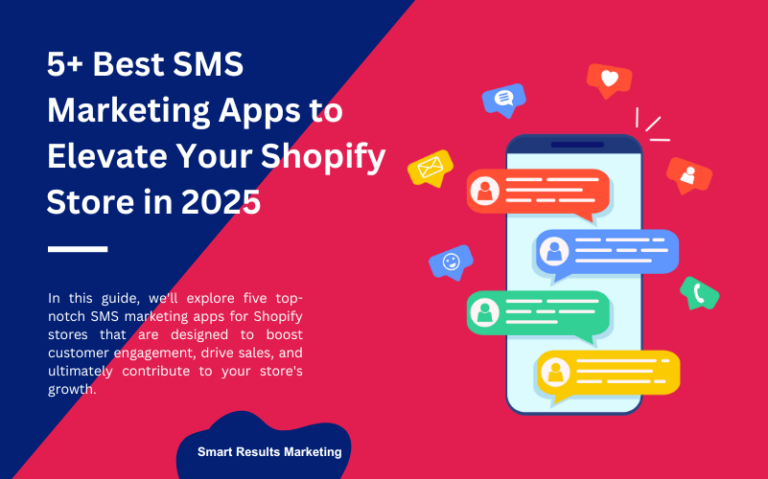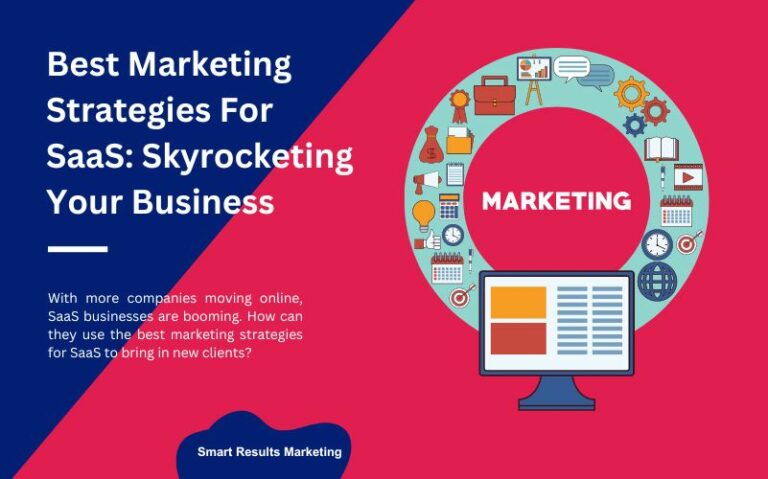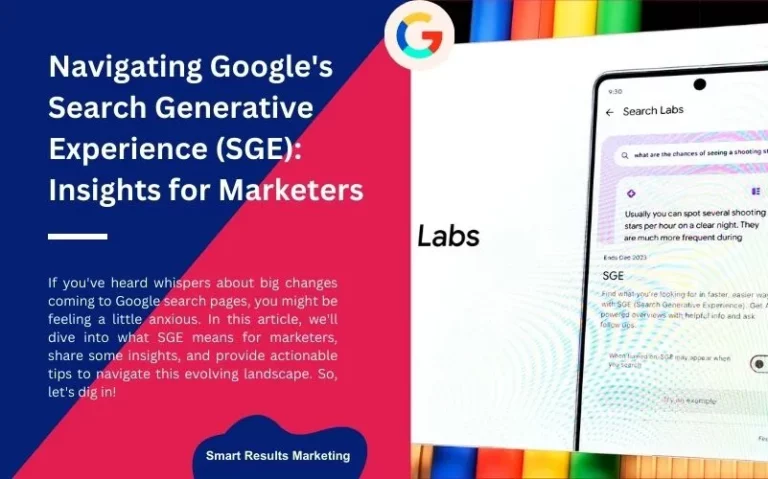How To Create And Sell Digital Products Online in 2025
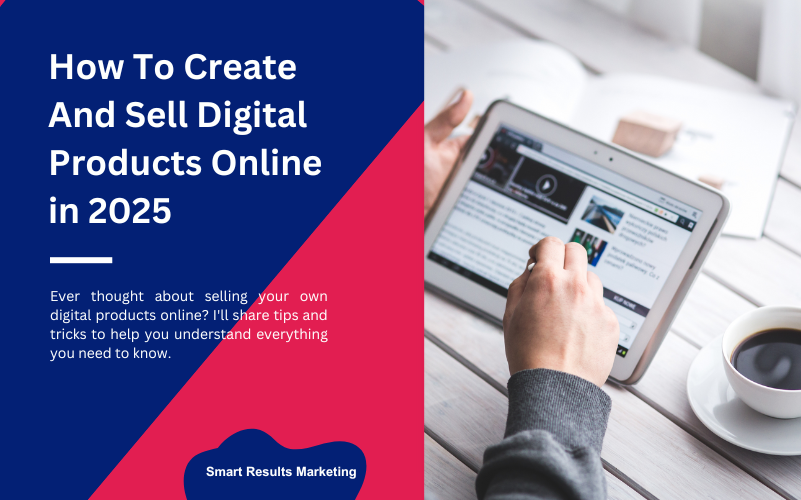
Ever thought about selling your own digital products online? It might seem overwhelming, but don’t worry – I’m here to make it easy for you.
In this guide, we’ll walk through the basics of online business together. Whether you’re just starting out or looking to improve your existing online store, I’ve got your back.
I’ll share tips and tricks to help you understand everything you need to know. So, let’s dive in and get your online business up and running.
Why Create Digital Products?
Exploring the world of digital products opens doors to an incredible online business opportunity. These creations are like seeds that keep growing, bringing in a steady income without constant effort.
What’s great is that they are simple and affordable to make, and you can sell them over and over again without any extra expenses.
It’s all about crafting something valuable once and then enjoying the rewards for years to come.
This digital creation guide is your ticket to mastering this art. So, get ready to dive in and absorb the knowledge because, by the end, you’ll be equipped with a brilliant digital product idea ready to launch. It’s an exciting journey, and I can’t wait to see what you create!
What Are The Best Digital Product Ideas To Sell Online?
So, here’s a simple rundown of the most profitable digital products you can create for your website or online shop. These ideas can give you a great starting point for your own business:
- eBooks
- Online Courses
- Membership Sites
- PDF Worksheets or Templates
- Software or Apps
- Stock Photos or Graphics
- Physical Products with a Digital Part
- Consultation or Online Services
- Digital Art
- Digital Downloads like video courses
Now that you have these options, it’s time to put your services out there online. This is the first step toward launching your own online business.
How To Create Digital Products In Five Simple Steps
Step 1: Assess the Demand
First things first, it’s crucial to ensure there’s a market for what you want to sell online.
I’ve heard stories of digital creators pouring their hearts into creating online courses or membership sites, only to face the disappointment of zero sales. It can make you question if digital marketing is even worth it.
Here are a few ways to measure the demand for your product:
Google Trends
Navigating the vast digital marketplace can be overwhelming, but fear not – Google Trends is your friend when it comes to understanding product demand.
Simply enter a keyword or phrase related to your product, and Google Trends will show you how often that term has been searched over time. It’s not just about numbers; you can also see how these searches vary by region.
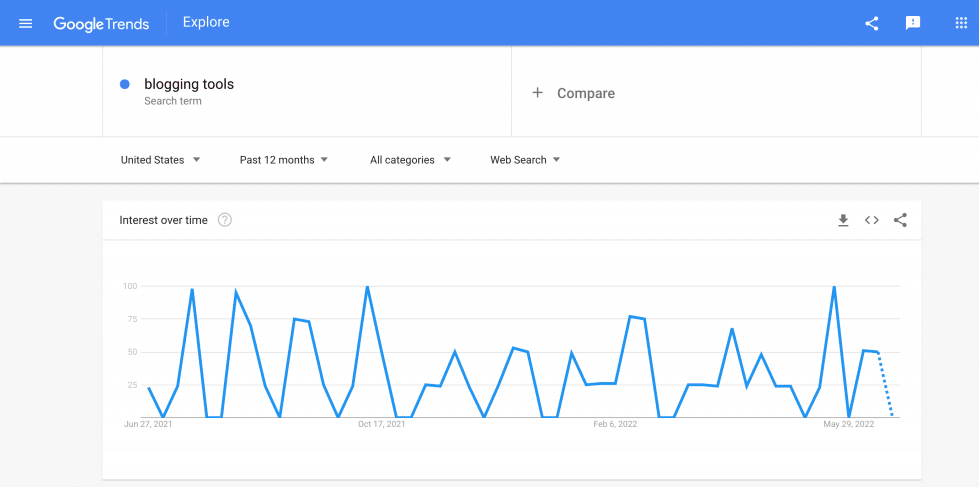
This insight allows you to tailor your marketing strategies to specific audiences. Additionally, Google Trends lets you compare the demand for different products, offering valuable insights into consumer preferences.
Armed with this knowledge, you can make informed decisions about the digital products you develop and market. This way, you’ll stay one step ahead, ensuring your business thrives in the competitive digital landscape.
Search Online Marketplaces
Here’s a lesser-known tactic that often goes unnoticed: diving into online marketplaces such as Appsumo or Product Hunt. These platforms, among others, spotlight digital products that are currently trending and in high demand among potential customers.
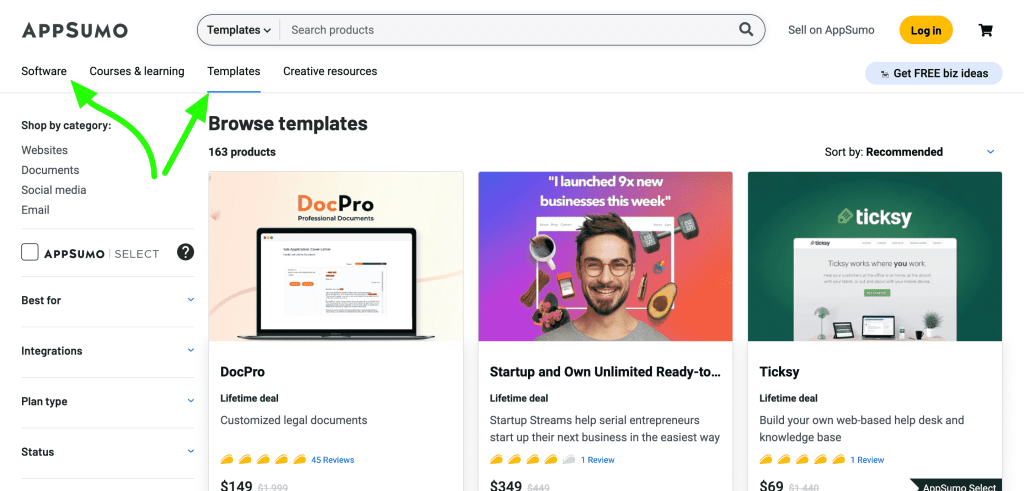
Why is this method so effective? Well, it’s like having a treasure trove of inspiration at your fingertips. By browsing these marketplaces, you can not only discover innovative products but also measure what’s selling like hotcakes online. It’s a fantastic way to gather ideas for your own products or services and to grasp the pulse of the online market.
Tapping into Your Subscriber Base – Your Email List
Now, if you’ve managed to build an active email list, consider this your goldmine of potential ideas.
Sending out a simple survey or utilizing tools like Google Forms can provide you with invaluable feedback directly from your subscribers.
These are the very people who have already shown interest in what you offer. Their insights can be like a roadmap, guiding you toward creating products or services that they are genuinely interested in purchasing. It’s a direct line to your audience’s desires, making your offerings all the more irresistible.
Discovering Hidden Gems in Social Media Interactions
Here’s a crafty trick I love: diving into the comments section on platforms like YouTube, Instagram, or TikTok. It’s a goldmine of untapped ideas waiting to be explored.
Here’s the scoop:
People often ask questions in these comments that remain unanswered. This gap presents a brilliant opportunity for you. By identifying these queries, you can gain unique insights into what people are genuinely curious about, and importantly, what hasn’t been addressed yet.
A Quick Note:
This strategy isn’t limited to just YouTube; it works seamlessly across various social media platforms like Instagram and TikTok.
Why is this so fantastic? Well, these queries essentially serve as a guide for creating content. When you spot a question that hasn’t been adequately answered, you know there’s a hungry audience out there seeking that information. This knowledge becomes the foundation for your digital products – you’re catering directly to an existing demand. How cool is that? Time to turn these hidden gems into valuable content!
STEP 2: Create A Free Lead Magnet Worth Buying
A common misconception in the world of online marketing revolves around lead magnets, with some marketers embracing them and others considering them a hassle. However, if your goal is to succeed in the realm of digital products, building an audience is paramount. The most effective method to cultivate this audience is by offering something valuable for free, enticing potential customers to share their email addresses with you.
This could take the form of a variety of freebies such as PDF reports, cheat sheets, video training, or mini-courses. Alternatively, you can harness the power of innovative tools like Jasper.ai to generate fresh digital product ideas. Remarkably, many content creators have harnessed artificial intelligence to craft compelling lead magnets, a strategy that can prove highly lucrative. The key to success lies in the quality and relevance of your free offering to the digital product you intend to sell.
Consider this as a golden rule when you’re in the process of creating your digital products:
offering a high-quality, closely related lead magnet can significantly enhance your chances of building a loyal and engaged customer base. It’s not just about giving something away for free; it’s about giving something away that truly resonates with your audience and sets the stage for your digital product’s success.
3. Start Building Your Digital Product Offer
It’s the moment to craft the blueprint for your digital product, the one you’re gearing up to sell. Remember the groundwork you laid in step one, understanding the demand? That insight now becomes your guiding light. You should have a clear picture of what people desire and are willing to invest in.
Additionally:
Check out our blog post to master the art of creating online product mockups.
As you shape your offer, consider these essential steps:
A Warm Welcome Video: Introduce your audience to what you’re offering, setting the stage for an engaging experience.
What They Will Learn: Outline the key takeaways and skills your customers will gain from your digital product.
The Content: Organize your material effectively, ensuring it’s easy to navigate and understand.
Recapping Everything They Learned: Summarize the crucial points, reinforcing the valuable knowledge your customers have acquired.
Wrapping Up: Conclude on a high note, leaving your customers inspired and satisfied.
Remember, these steps apply universally when selling digital products online, whether it’s downloadable guides, templates, or video courses. It’s all about crafting a seamless and enriching experience for your customers.
4. Create Your Sales Funnel Process
A sales funnel is the roadmap guiding potential customers from the initial awareness stage right through to making a purchase. The essence of any sales funnel lies in its ability to smoothly transition people through various stages until they’re ready to seal the deal.
Here’s my suggestion: employing a dedicated sales funnel builder streamlines this process seamlessly. However, if you prefer, you can also host your funnel pages right on your website using platforms like WooCommerce or other blogging resources.
Now, when it comes to building your sales process, you’ve got options. Websites such as Thrivecart, Clickfunnels 2.0, Shopify, Kajabi, Podia, Sendowl, and Easy Digital Downloads are your trusted allies. These platforms are tailored to guide you in crafting a compelling and efficient sales journey, ensuring that potential customers smoothly transition from browsers to buyers.
Step 5: Guide Potential Customers with a Thoughtful Email Sequence
So, you’ve crafted a fantastic digital product and identified a sizable audience. Sales are rolling in, but what about those individuals who didn’t make an upfront purchase? How can you gently steer them toward your product without being pushy? Here’s your game plan.
Firstly, it’s all about delivering value. Construct an email sequence that offers valuable content—tips, tricks, or helpful insights related to your product. Position yourself as an expert, someone trustworthy who provides high-quality information.
Next, infuse a sense of urgency. Convey to your readers that your product is essential for their lives, perhaps through a limited-time special offer or a discount available within a specific timeframe. Your offer needs to be irresistibly compelling, compelling enough to drive action.
Lastly, foster a sense of community. Make your readers feel like they are part of something significant. This could involve social media groups, forums, or engaging comments on related blog posts.
How to Successfully Market Your Digital Products
Now comes the exciting part: getting your digital products out there and turning your side gig into a thriving business.
First, Select a Traffic Source
Are you planning to kickstart a blog and attract natural visitors, or is the faster route of paid advertising more your style? Whichever path you choose, be ready to invest both time and money into your marketing strategies.
There isn’t a one-size-fits-all solution when it comes to picking a traffic source. It all boils down to your products, your audience, and your budget.
For beginners, my suggestion is to concentrate on organic traffic methods, like creating concise content or optimizing for search engines (SEO). Once you’ve established a steady flow of visitors, you can venture into paid avenues such as Google Ads or Facebook Ads.
The key here is to take it one step at a time, focusing on one traffic source initially and gradually expanding your marketing efforts. Slow and steady wins the race!
Utilize a Digital Product Platform
Opting for a digital product platform offers a shield for your digital files against piracy while granting you the ability to monitor sales, generate discount codes, and seamlessly deliver your products.
There’s an overload of digital product platforms available, each catering to different needs. Consider platforms like:
SamCart: Renowned as a leading eCommerce platform, SamCart streamlines your online sales journey. With features to drive traffic, process payments, and manage orders efficiently, it offers an intuitive interface for hassle-free business management.
Sellfy: Tailored for content creators and YouTubers, Sellfy empowers you to sell digital products and even offers print-on-demand services. It’s a versatile solution for creators looking to monetize their work effectively.
Podia: If you’re keen on launching online courses and selling digital products, Podia is your go-to platform. It helps you monetize your audience seamlessly, providing a platform for selling various digital offerings.
Sendowl: For a comprehensive solution, Sendowl enables you to host and sell digital products, subscriptions, memberships, and more. It provides a streamlined experience for managing diverse digital offerings.
Easy Digital Downloads: This software simplifies the process of selling digital downloads. It offers user-friendly features, making it an ideal choice for those looking for straightforward solutions.
While some free software options exist, be cautious about their limitations.
For instance, using WordPress might seem free, but it restricts essential functions such as tracking sales or offering discount codes, hindering your ability to optimize your sales strategy effectively.
Choosing a dedicated digital product platform ensures a smoother, more professional experience for both you and your customers.
Implement Evergreen Deadline Funnels for Higher Sales
For consistent and recurring revenue, consider integrating an evergreen marketing solution like Deadline Funnels into your strategy.
Deadline Funnels is a top-tier tool designed for evergreen marketing. With this tool, you can set precise deadlines for your products and services, creating a sense of urgency and triggering FOMO (fear of missing out) among potential customers. This urgency often prompts people to take immediate action and make a purchase.
Moreover, the beauty of evergreen funnels lies in their ability to enhance customer value over time. By strategically incorporating upsells within your evergreen funnel, you can offer additional products to your customers, thereby increasing their overall value to your business. It’s a win-win situation, encouraging immediate action and nurturing long-term customer relationships.
The Ups and Downs of Selling Digital Products
Nowadays, businesses that used to sell physical items are also selling digital stuff. It’s a smart move that can bring in a good income.
Here’s the deal: selling digital products has its perks.
✓ Unlike physical items, digital products don’t need space for storage, and there’s no worry about them getting damaged or lost because customers can download them right after paying.
✓Plus, selling digital products means you can reach people from all over the world. But, here’s the catch – if you don’t have a website, it can be tricky.
You’ll need to figure out how customers will pay, and how you’ll send them the product, and you’ll have to do some online promotion. It sounds like a lot, but it’s doable, especially if you’re ready to learn.
To Wrap Up: Crafting and Selling Digital Products Successfully
Let’s sum it up: creating and selling digital products is not just a business move; it’s a skill. By understanding your market, using the right tools, and having a solid marketing strategy, you can turn your ideas into valuable products.
Remember, it’s not just about the product; it’s about the experience you provide to your customers. Focus on quality, excellent customer service, and continuous improvement. Stay updated with the latest trends and technologies, and don’t hesitate to seek help or advice when needed.
With determination, creativity, and a commitment to learning, you have the potential to not just enter but excel in the digital product market.
So, dive in, stay persistent, and watch your digital products transform into a successful venture.
